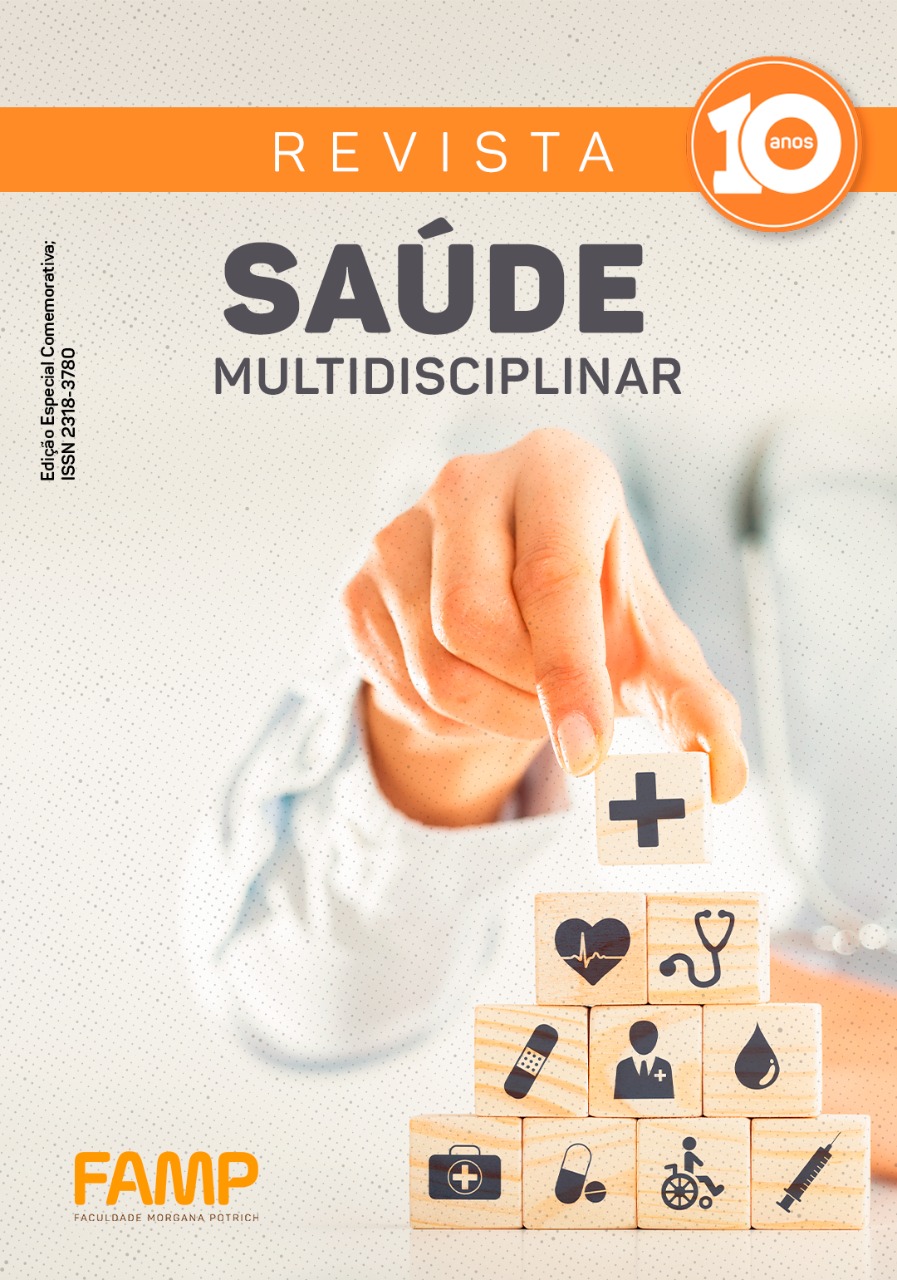A EFICÁCIA DA CINESIOTERAPIA NA REABILITAÇÃO MOTORA PÓS CRANIOTOMIA EM REGIÃO FRONTO - PARIETAL: RELATO DE CASO
DOI:
https://doi.org/10.53740/rsm.v12i2.581Keywords:
Meningioma, Neoplasias Encefálica e FisioterapiaAbstract
The most common type of surgery to remove a meningioma is called a craniotomy. Meningiomas are benign tumors, being classified as one of the main groups of primary neoplasms of the central nervous system, with a predominance in female adults aged between 50 and 70 years. Presenting symptoms may be headache, seizures, blurred vision, weakness in arms or legs, numbness, loss of balance, hearing loss, memory loss. Objective: To present the results regarding the physical therapy care of a patient after craniectomy for Meningioma in the left frontoparietal region, addressing the practice of kinesiotherapy exercises. Methods: The patient underwent an initial assessment using the neurological assessment form developed by the research team of this study, which assessed muscle strength, visual analogue pain scale (VAS), reflexes, sensitivity, Rombeg test, gait, functional independence scale, handgrip strength using a dynamometer. The service protocol for motor rehabilitation was carried out through active therapeutic exercises, carried out in the positions, sitting and standing, gradually. Results: However, it was possible to observe significant results in the handgrip strength, at the beginning of the evaluation the patient obtained 9.0 kg for the dominant hand and after the end of the treatment 17.9 kg. Conclusion: The proposed physiotherapeutic rehabilitation showed an increase in palm pressure strength, as well as muscle strength recovery, favoring an increase in fine motor skills of the right hand.
References
ALBERTI, Eduardo Juliano et al. Mesa lúdica: um estudo comparativo entre a reabilitação lúdica e a cinesioterapia na restrição de movimentos dos membros superiores em indivíduos com AVC. 2019.
APRA, Caroline; PEYRE, Matthieu; KALAMARIDES, Michel. Opções atuais de tratamento para meningioma. Revisão especializada de neurotherapeutics, v. 18, n. 3, pág. 241-249, 2018.
AVELINO, Patrick Roberto et al. Revisão das propriedades psicométricas de testes de coordenação motora dos membros superiores em hemiparéticos. Revista de Terapia Ocupacional da Universidade de São Paulo, v. 24, n. 3, p. 273-280, 2013.
BORGES, Luiza de Martino Cruvinel. PACIENTE COM LHERMITTE DUCLOS E MENINGIOMA, POSSÍVEL DIAGNÓSTICO DE SÍNDROME DE COWDEN. Revista Brasileira de Neurologia e Psiquiatria, v. 17, n. 3, 2013.
CODOGNO, Franciane Teixeira de Oliveira. Influência do mobiliário na coordenação motora fina e no controle postural de alunos com paralisia cerebral. 2011.
DE PIERI, Juliana Noronha et al. Avaliação da independência funcional e da qualidade de vida no pós-operatório de tumor cerebral. Revista Neurociências, v. 19, n. 3, p. 477-483, 2011.
DE PINHO BORELLA, Marcella; SACCHELLI, Tatiana. Os efeitos da prática de atividades motoras sobre a neuroplasticidade. Revista Neurociências, v. 17, n. 2, p. 161-169, 2009.
DOS SANTOS CUSTÓDIO, Jaqueline; LEITE, Rafaela Cequalini Paula; DE REZENDE, Laura Ferreira. Proposta de Atendimento Fisioterapêutico em Paciente com Meningioma. JBNC-JORNAL BRASILEIRO DE NEUROCIRURGIA, v. 22, n. 3, p. 104109, 2011.
FATHI, Ali-Reza; ROELCKE, Ulrich. Meningioma. Relatórios atuais de neurologia e neurociência, v. 13, n. 4, pág. 337, 2013.
KUSHNER DS, AMIDEI C. Rehabilitation of motor dysfunction in primary brain tumor patients†. Neurooncol Pract. 2015;2(4):185-191. doi:10.1093/nop/npv019.
MAZAIA, Carolina Ruiz et al. Meningioma na tenda cerebelar: diagnóstico e tratamento. ARCHIVES OF HEALTH INVESTIGATION, v. 6, n. 6, 2017.
PEREIRA, Raphael da Silva Fonseca et al. Diagnóstico e acompanhamento evolutivo dos meningiomas através da ressonância magnética. REVISTA BRASILEIRA MILITAR DE CIÊNCIAS, v. 7, n. 17, 2021.
THAKKAR P, GREENWALD BD, PATEL P. Rehabilitation of Adult Patients with Primary Brain Tumors: A Narrative Review. Brain Sci. 2020;10(8):492. Published 2020 Jul 29. doi:10.3390/brainsci10080492.
Additional Files
Published
How to Cite
Issue
Section
License
Copyright (c) 2022 REVISTA SAÚDE MULTIDISCIPLINAR

This work is licensed under a Creative Commons Attribution-NonCommercial-NoDerivatives 4.0 International License.









